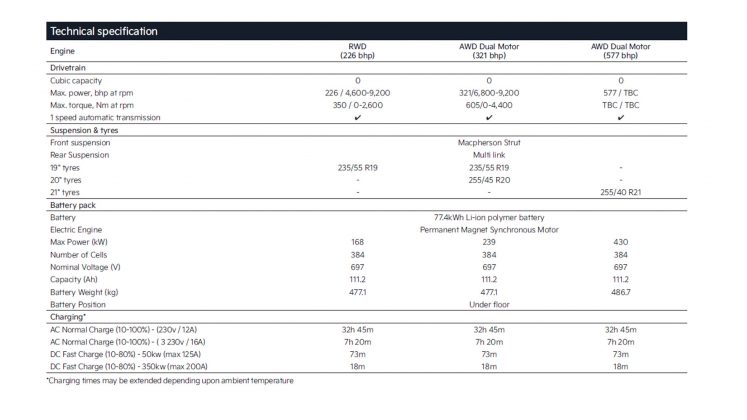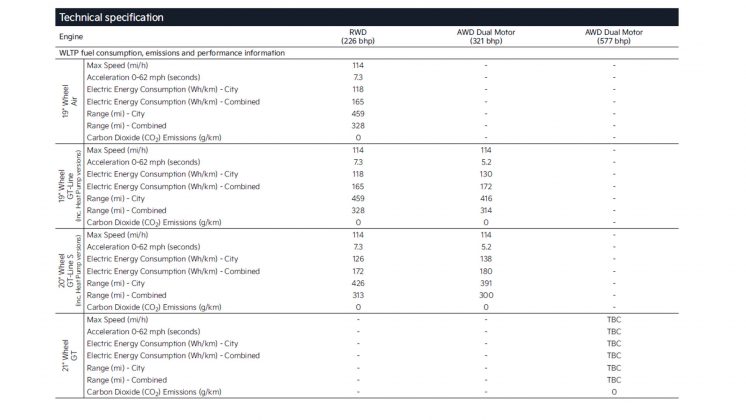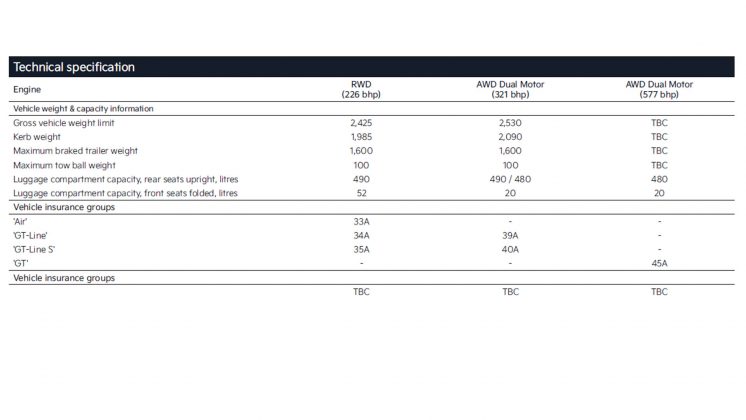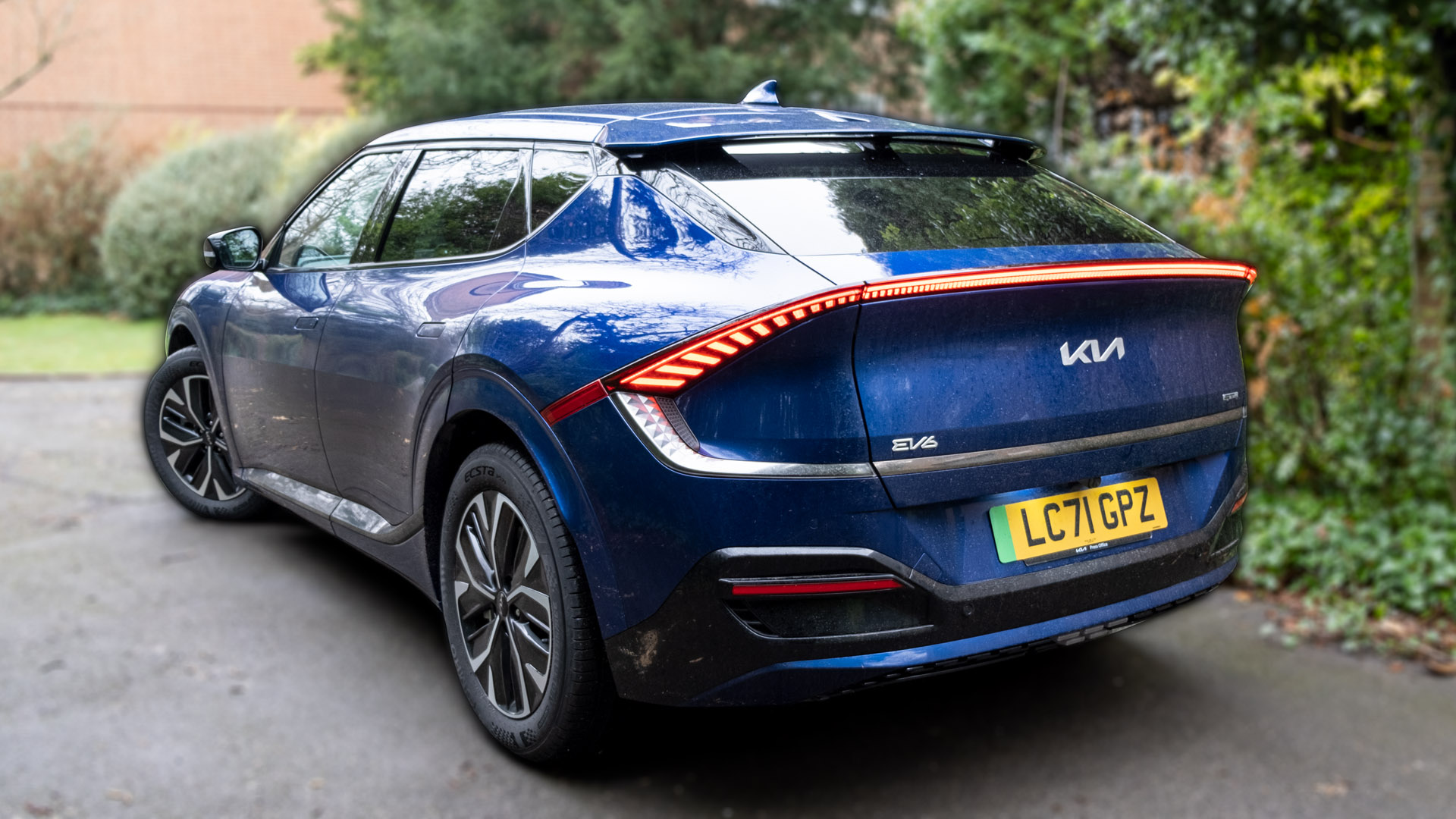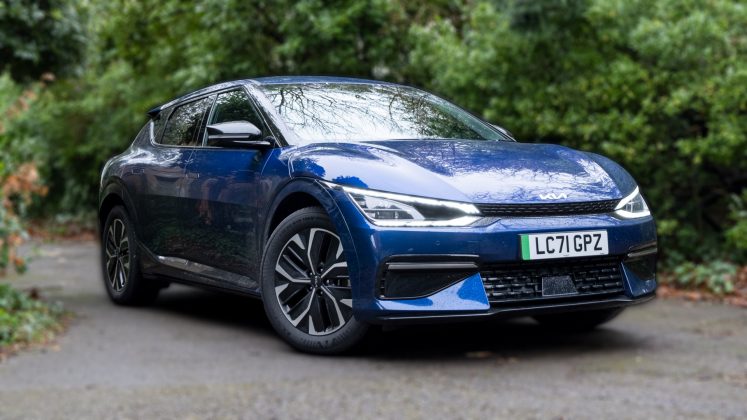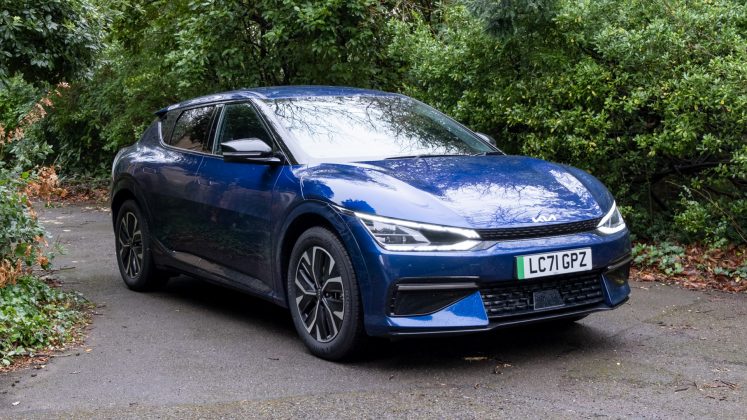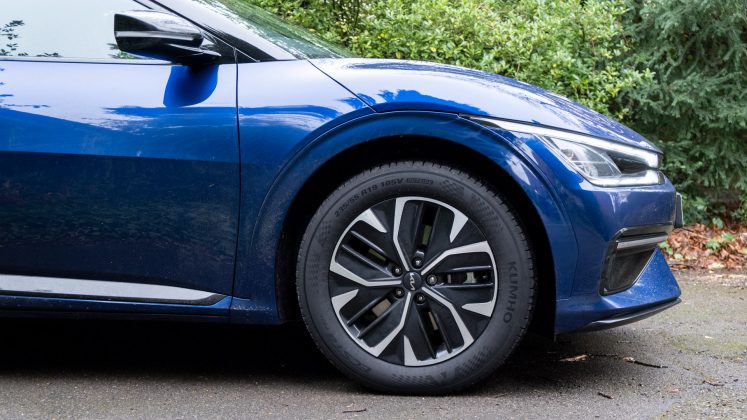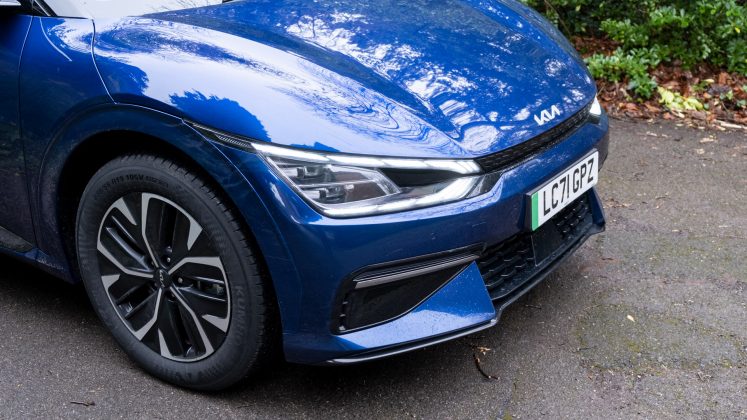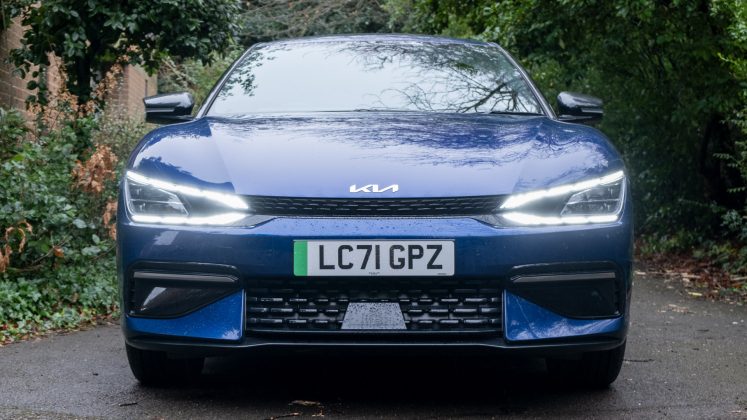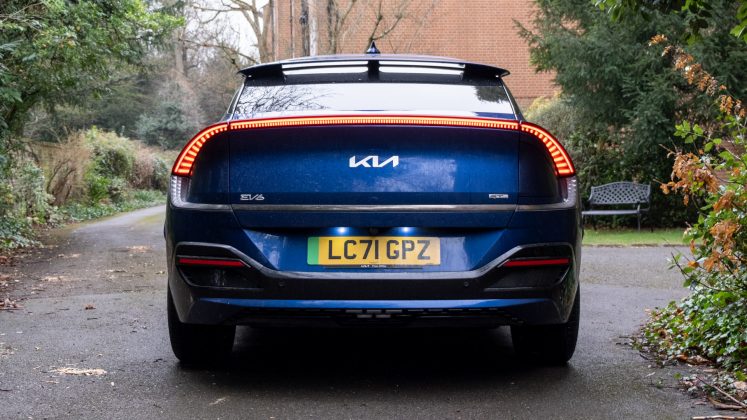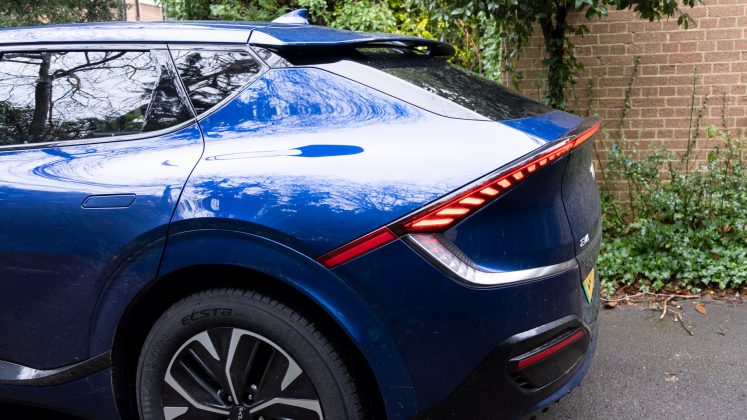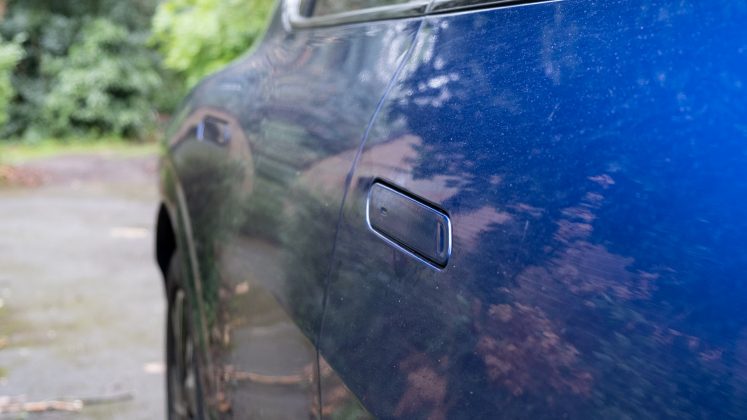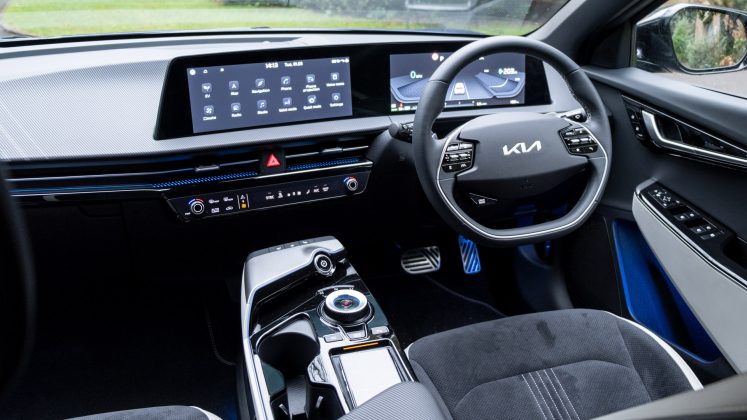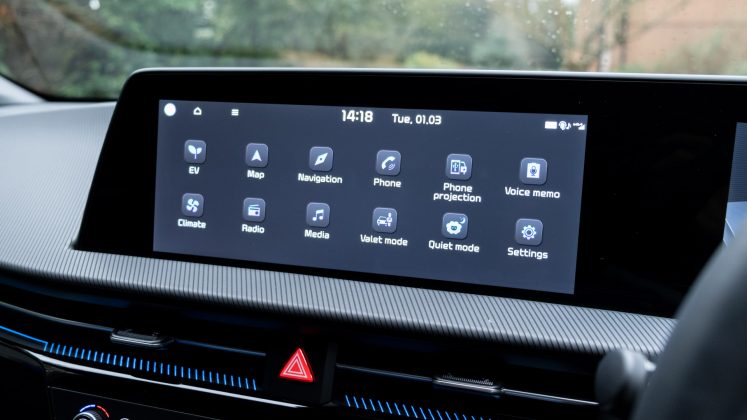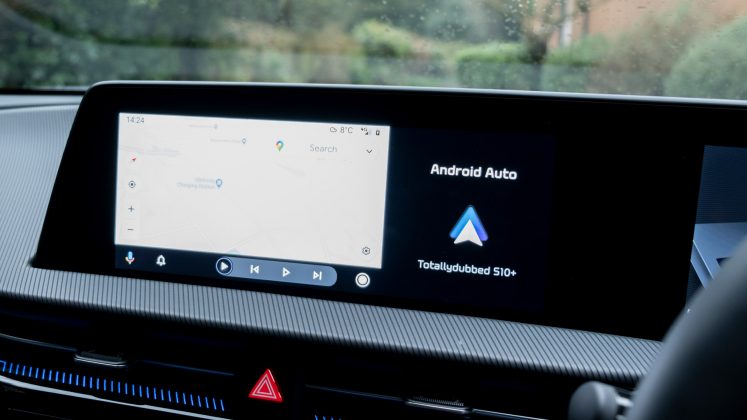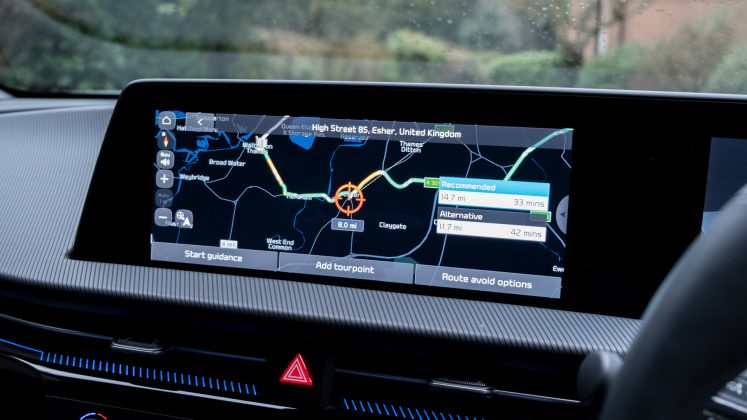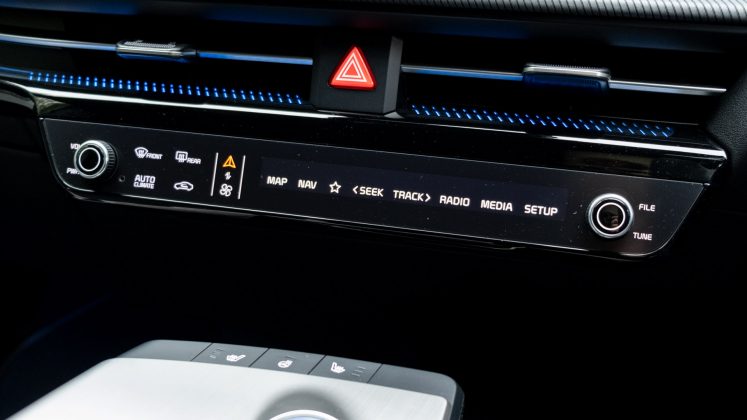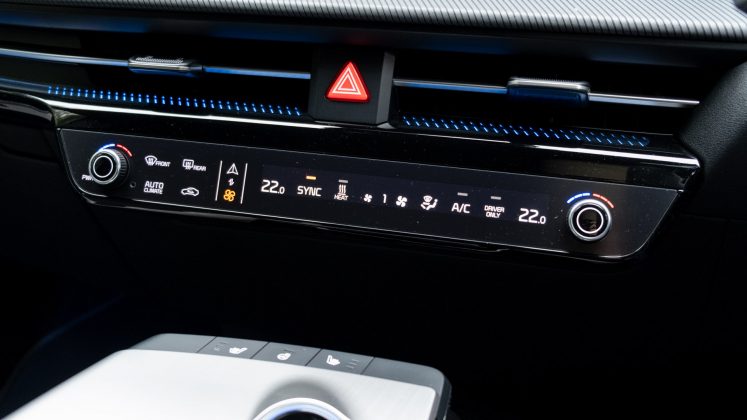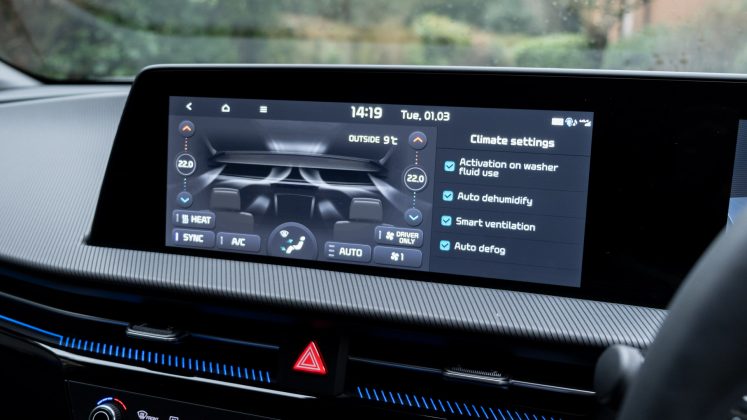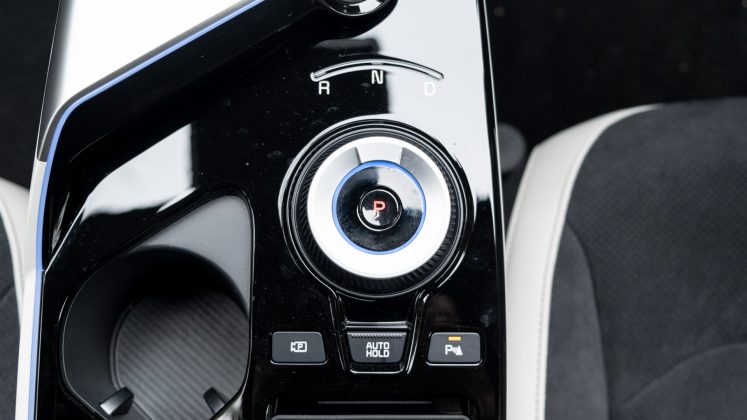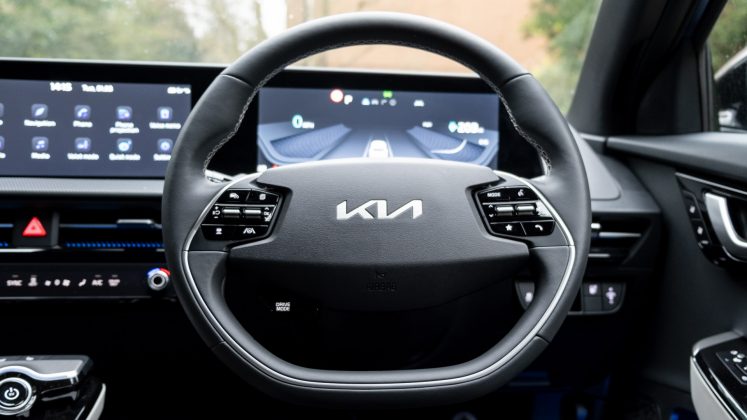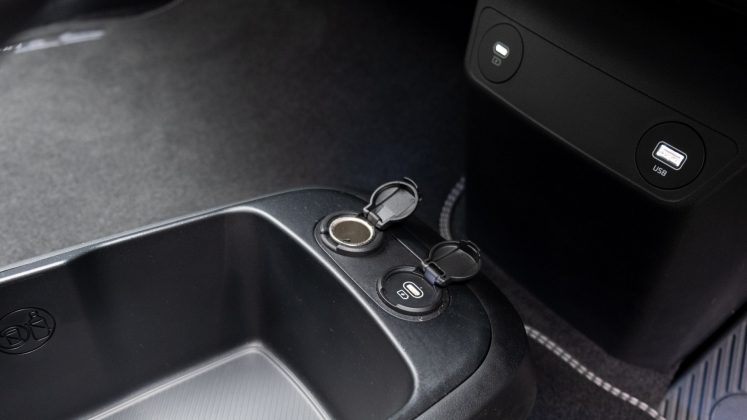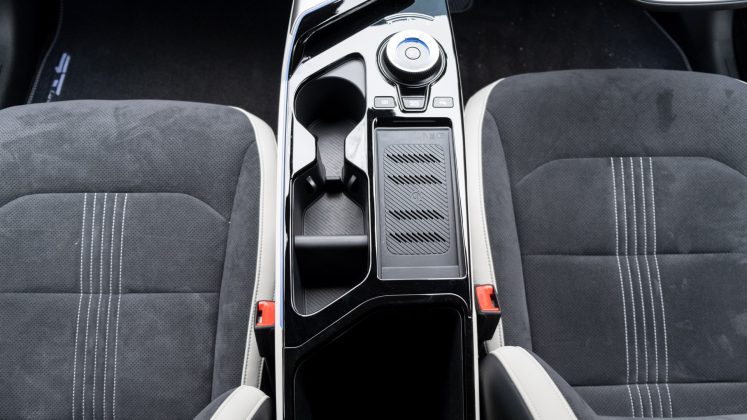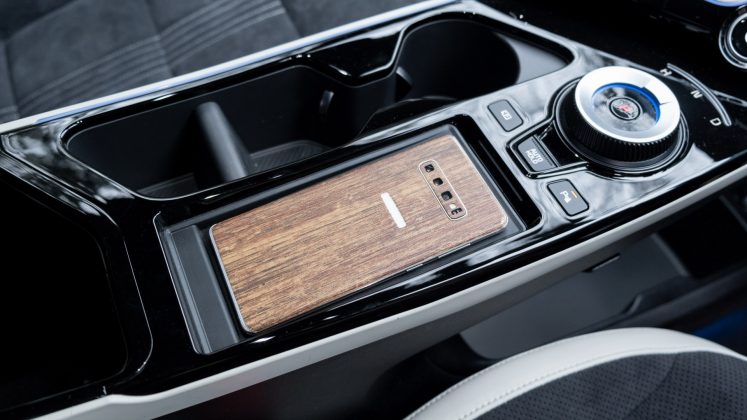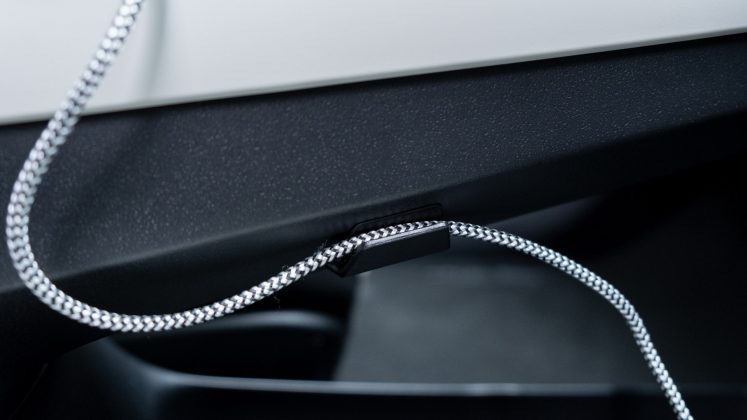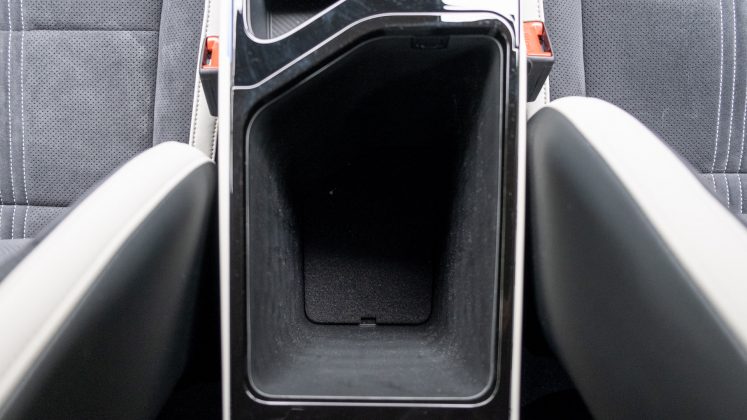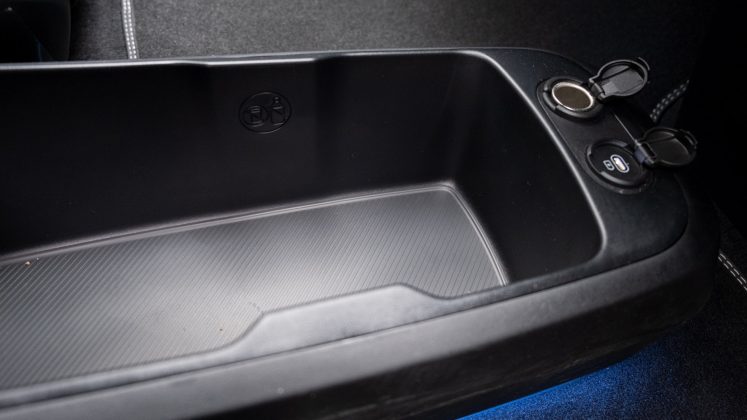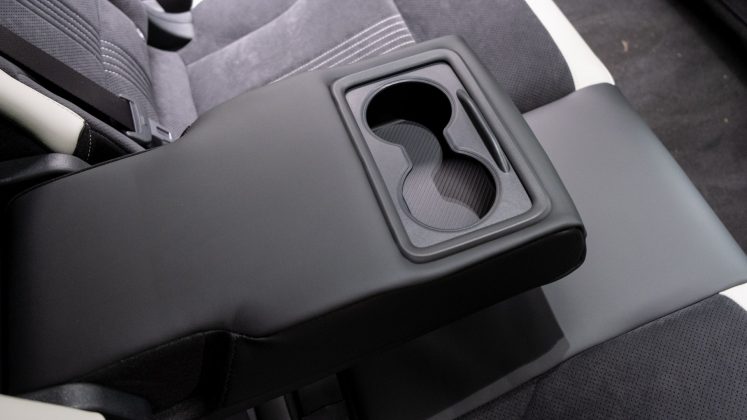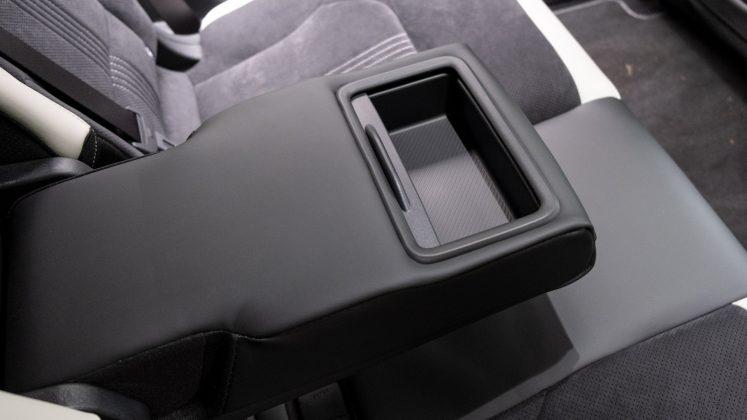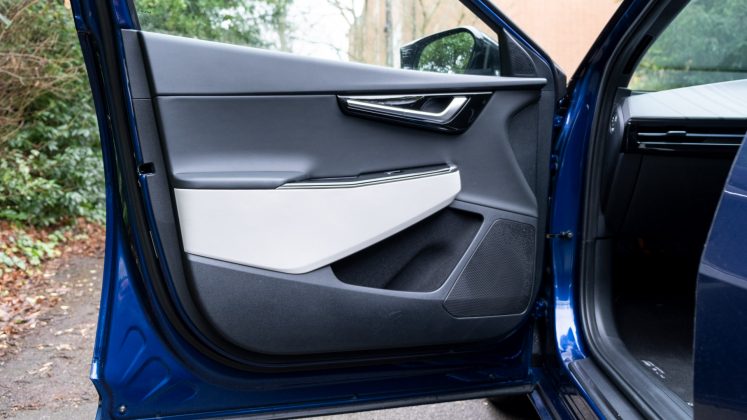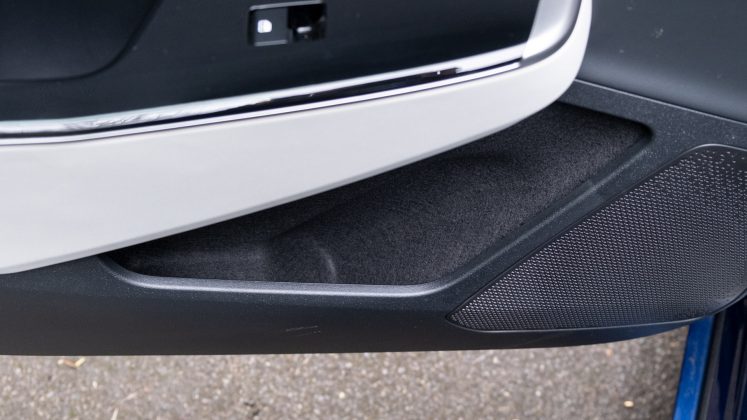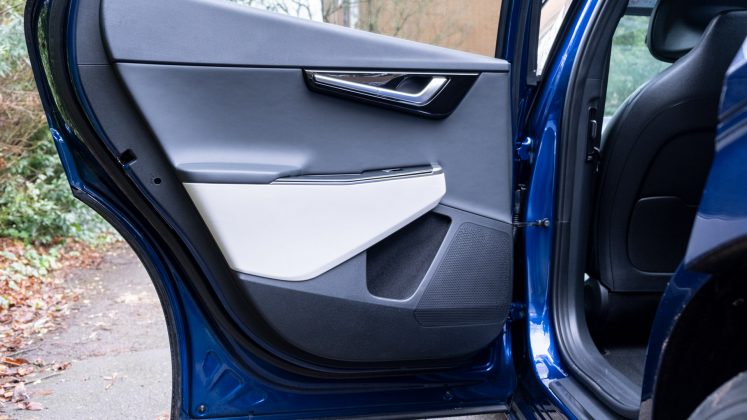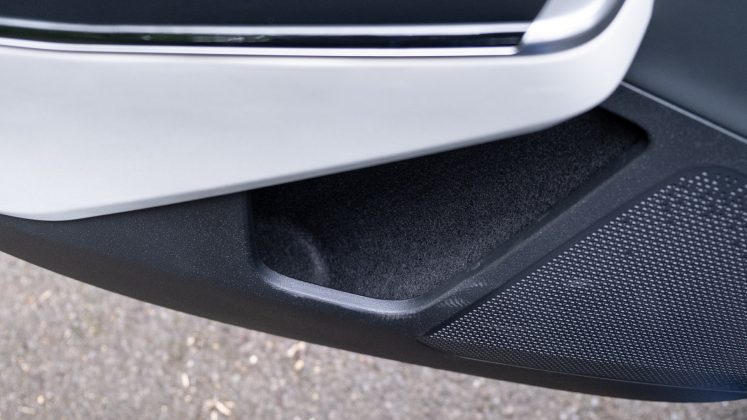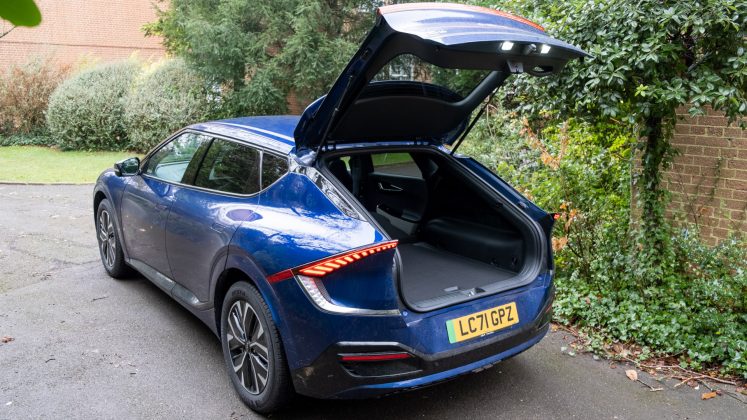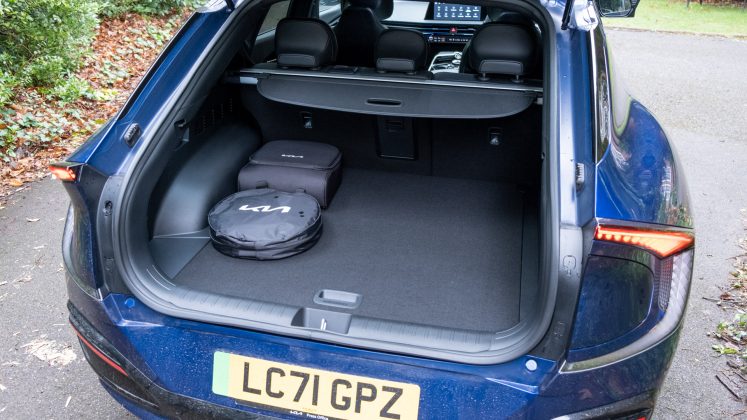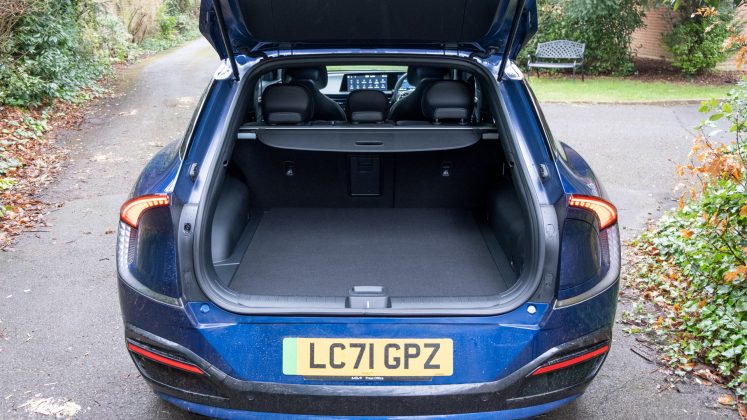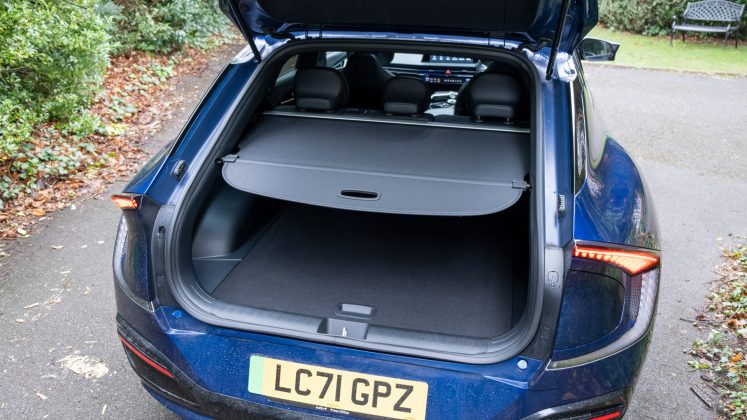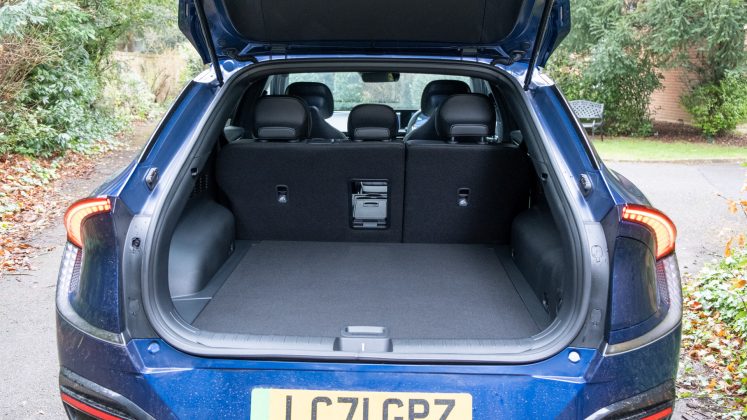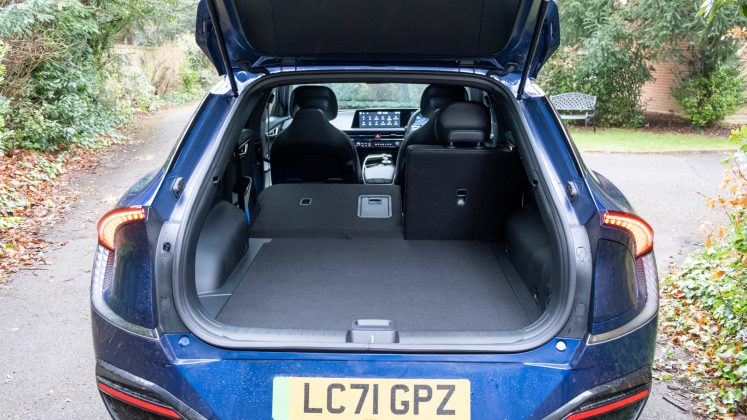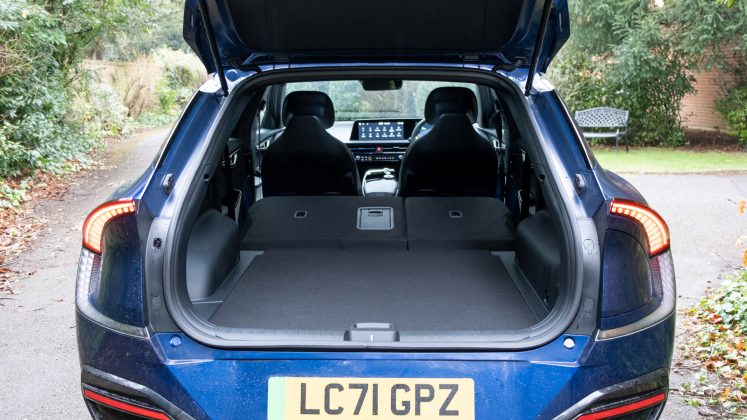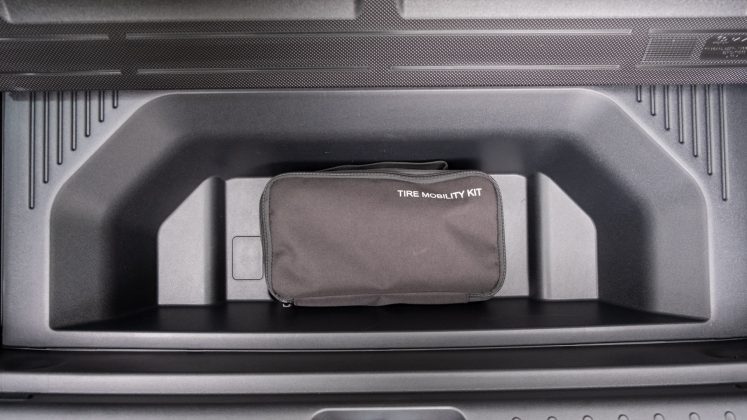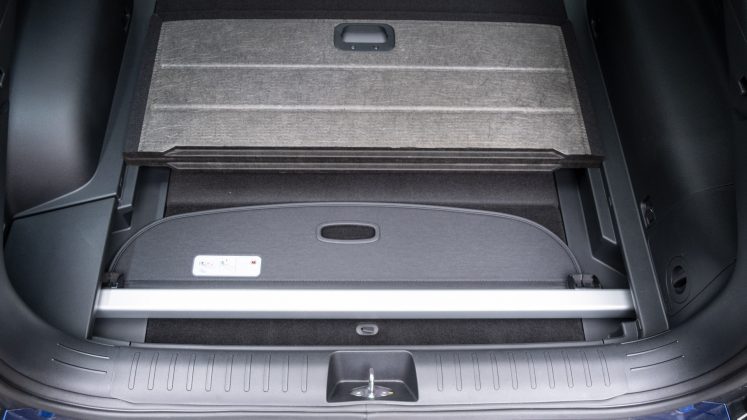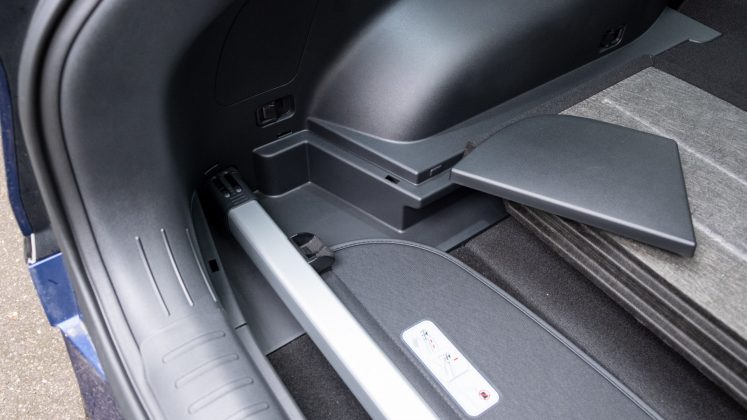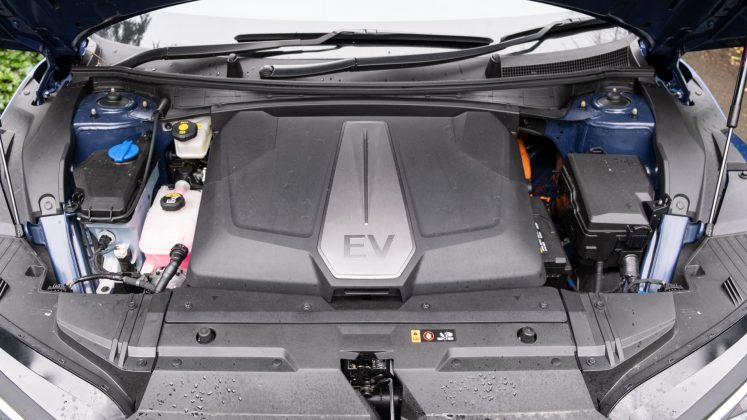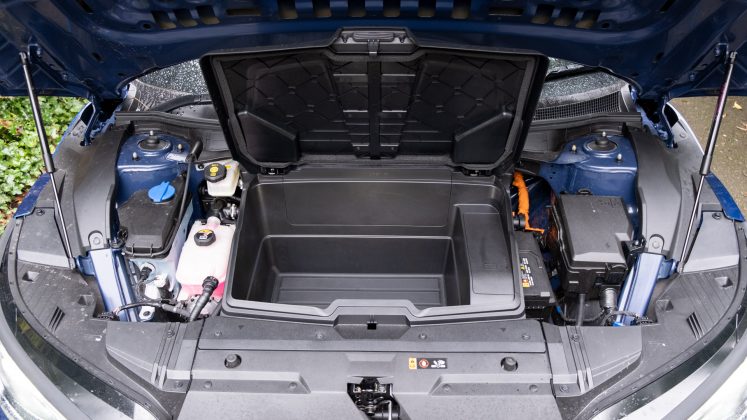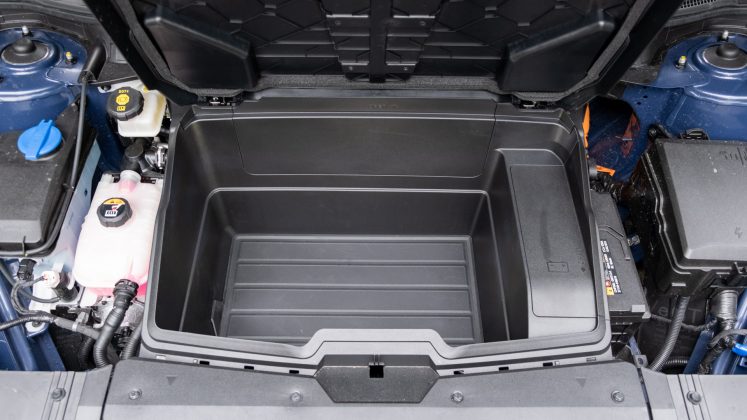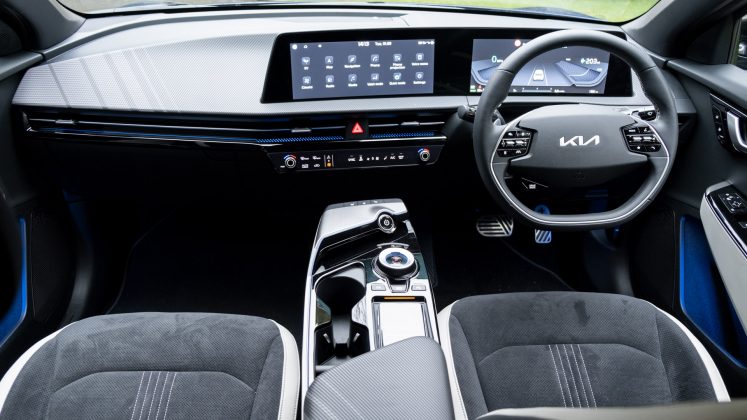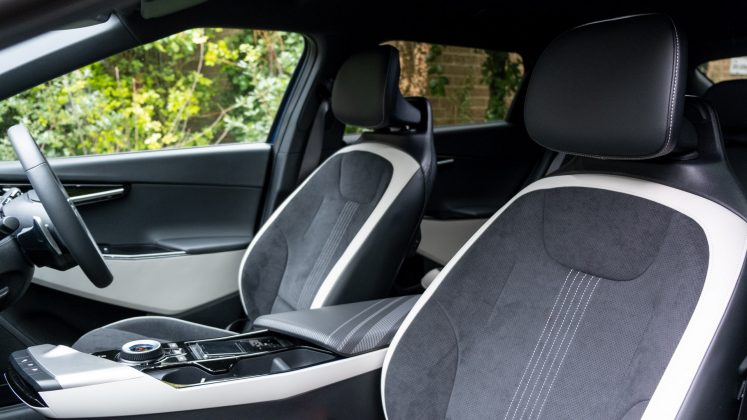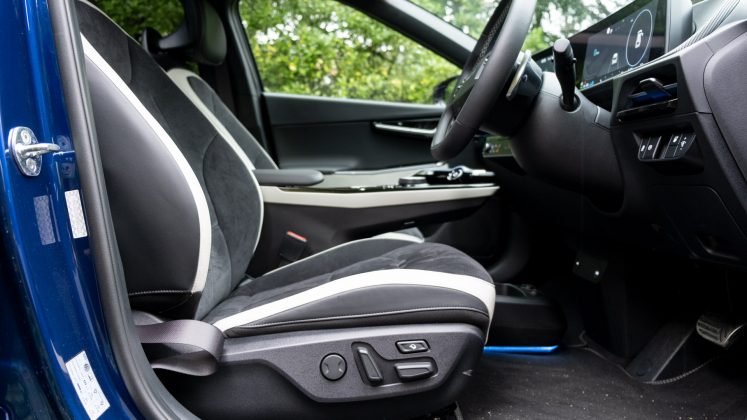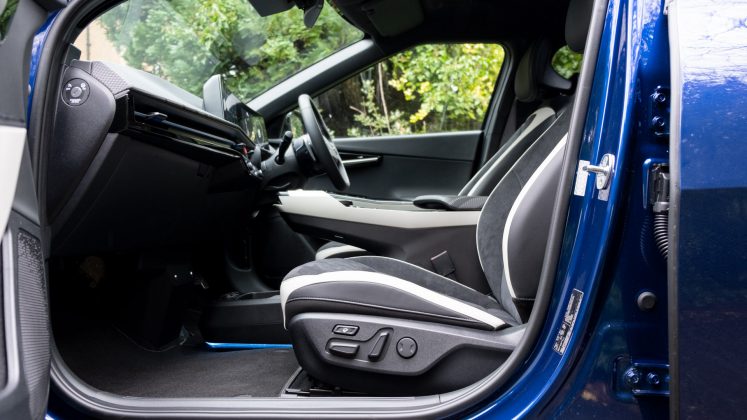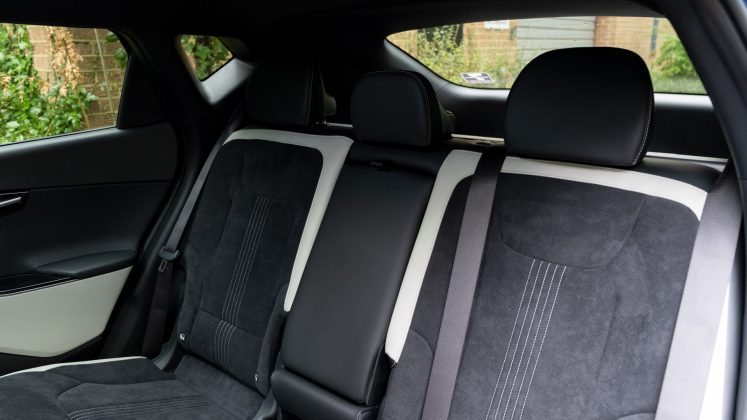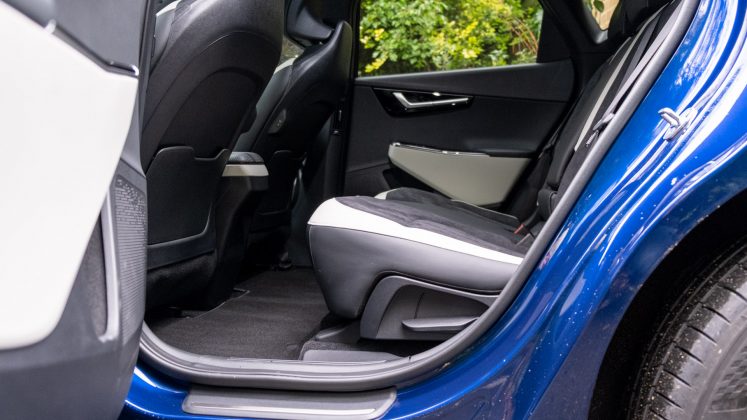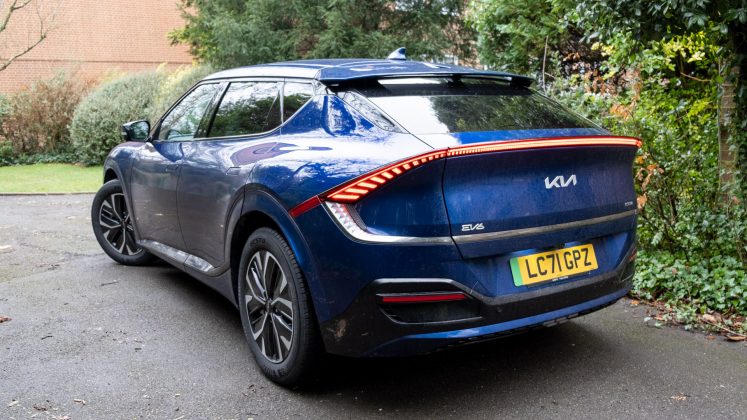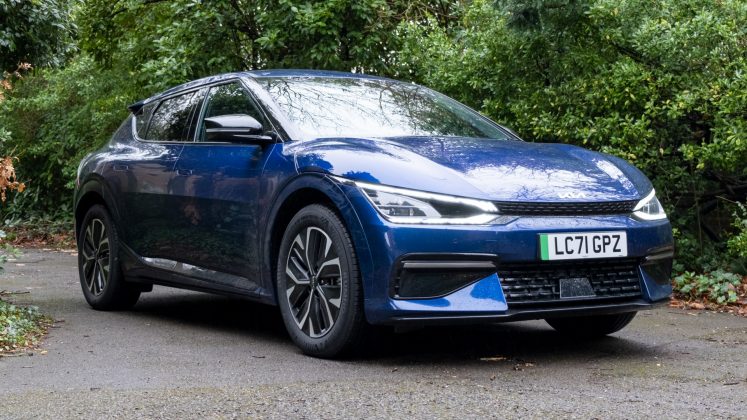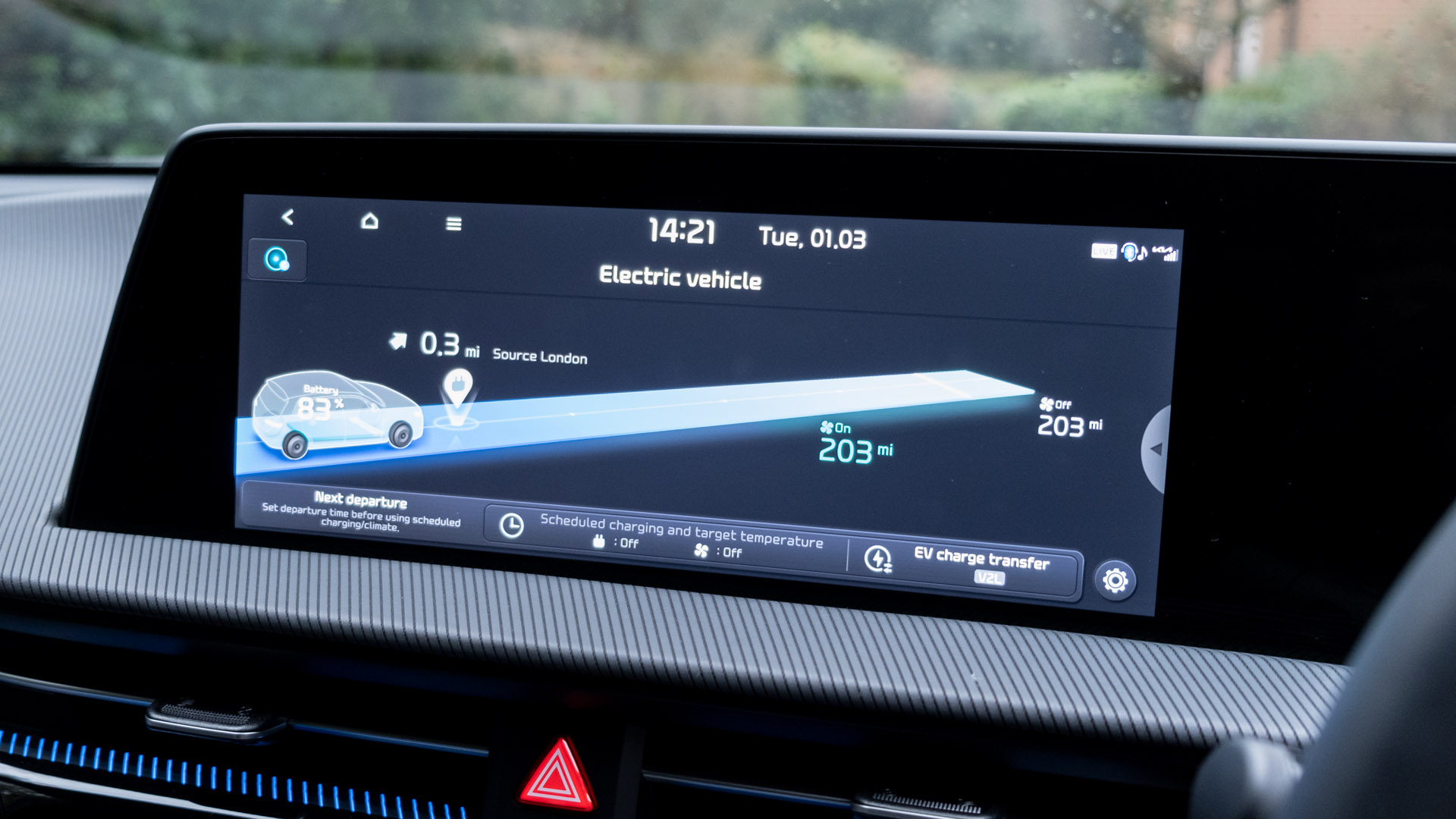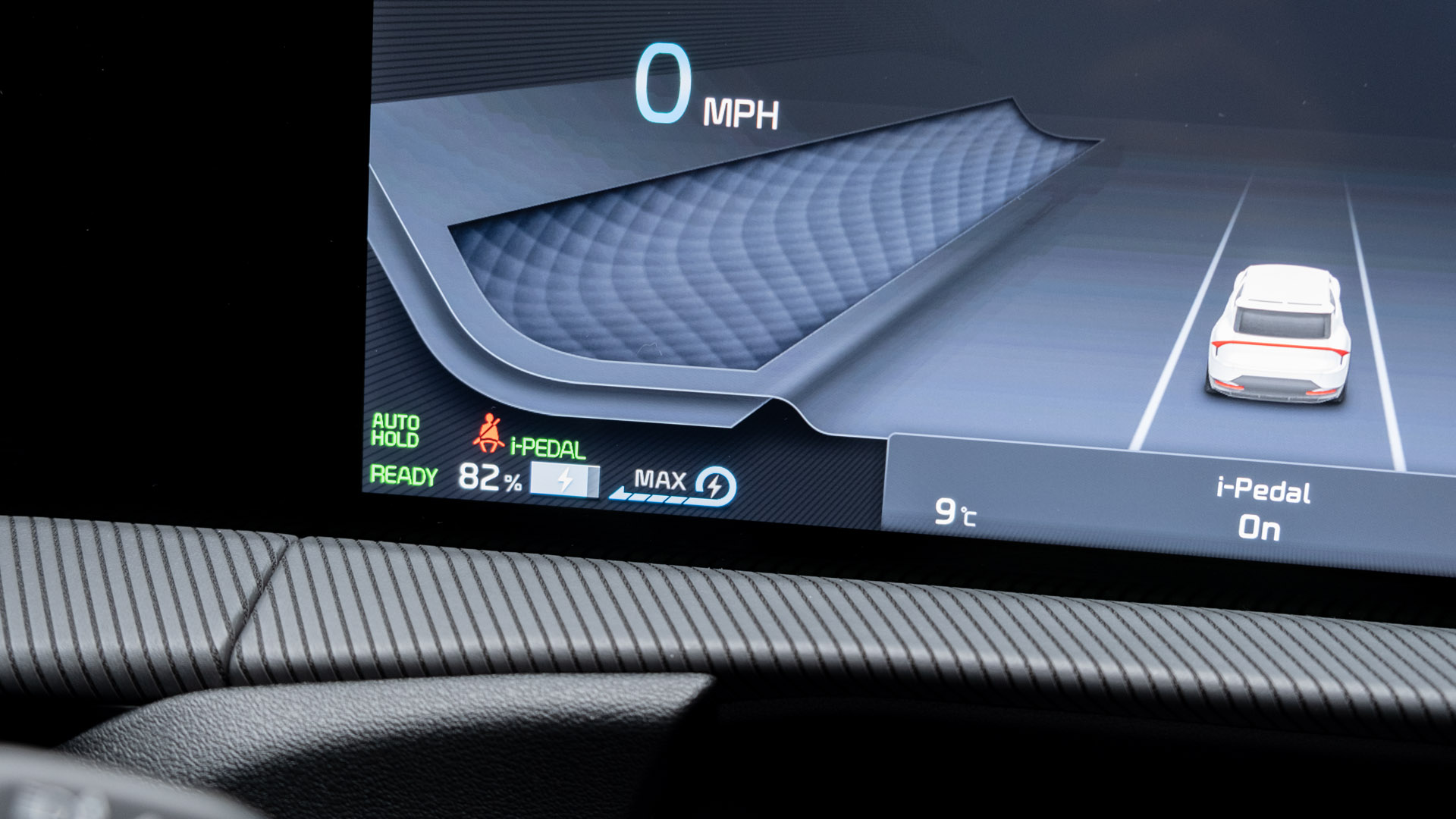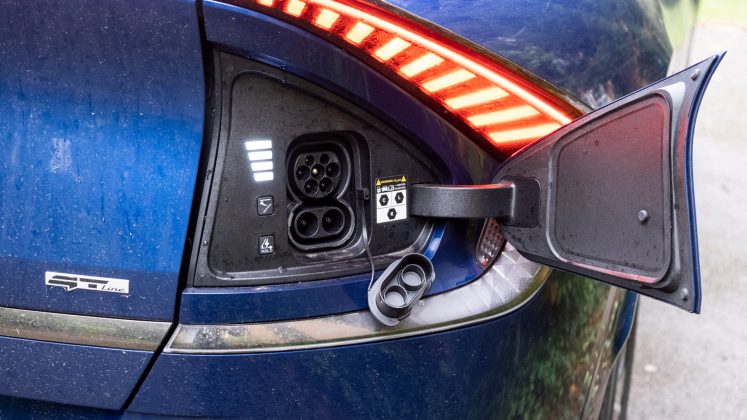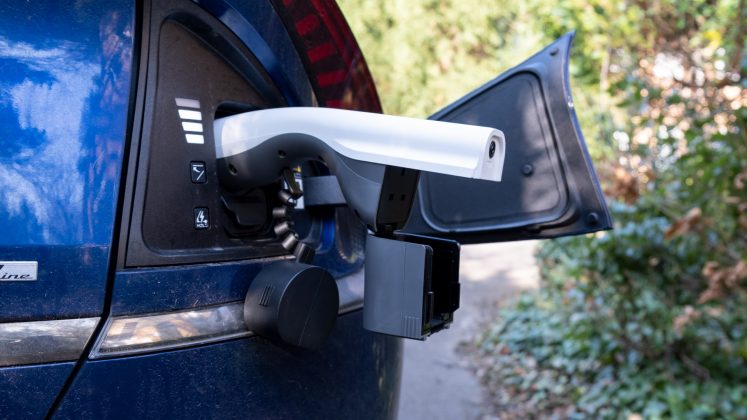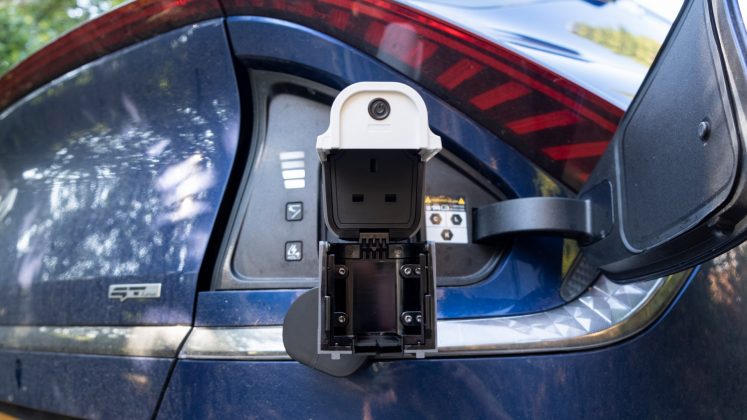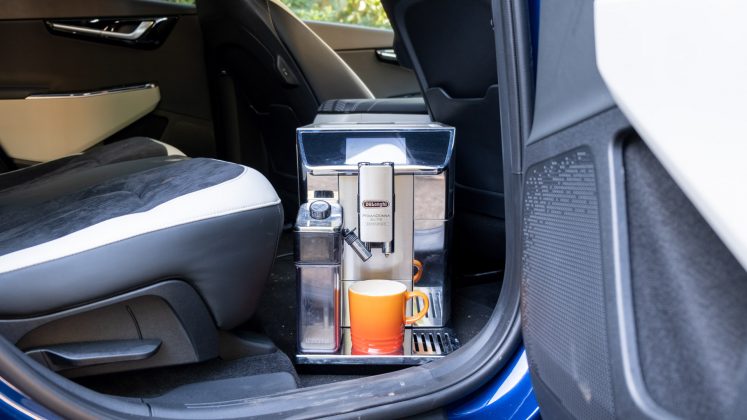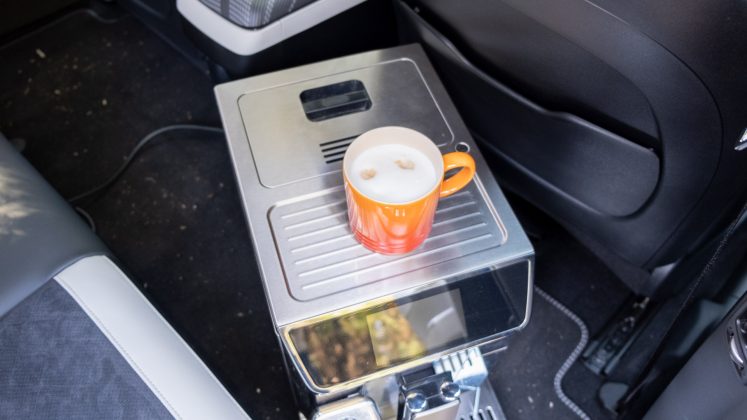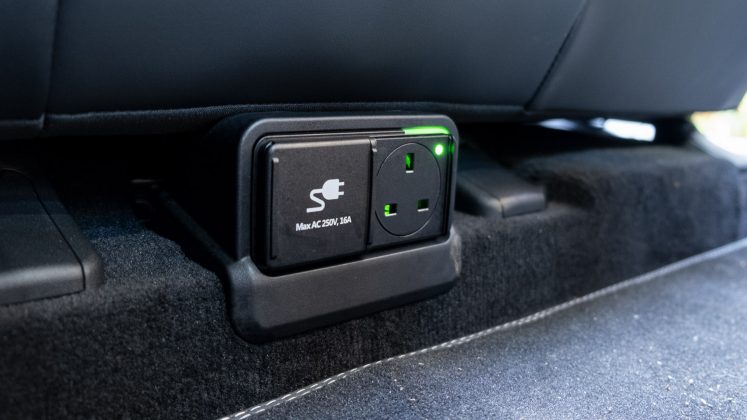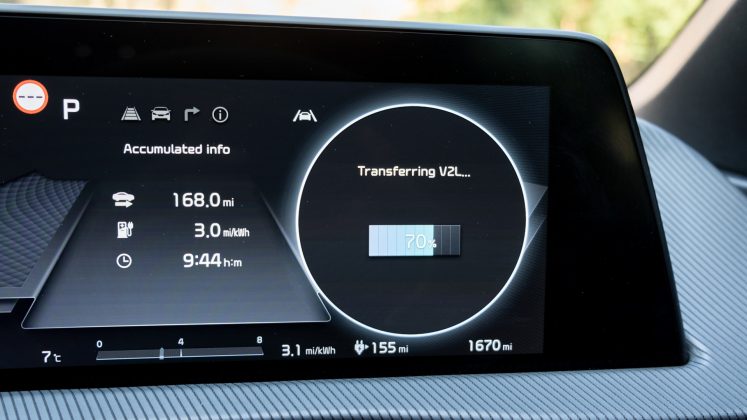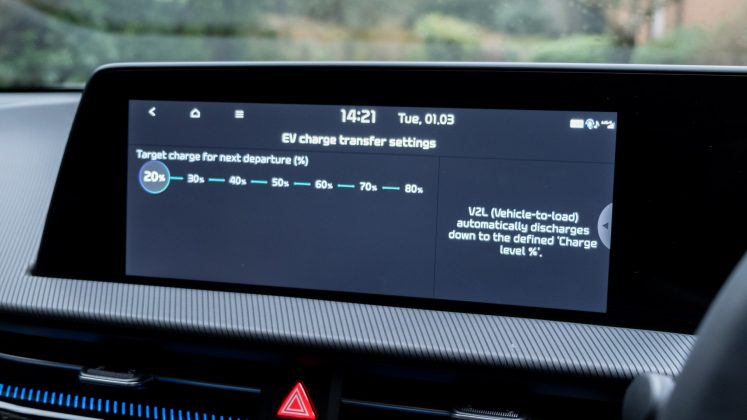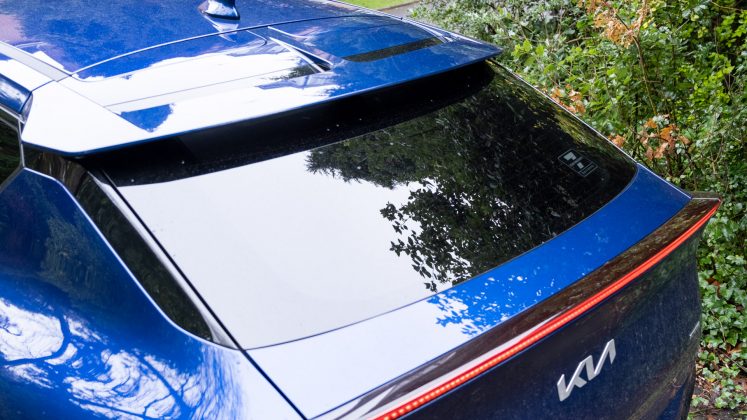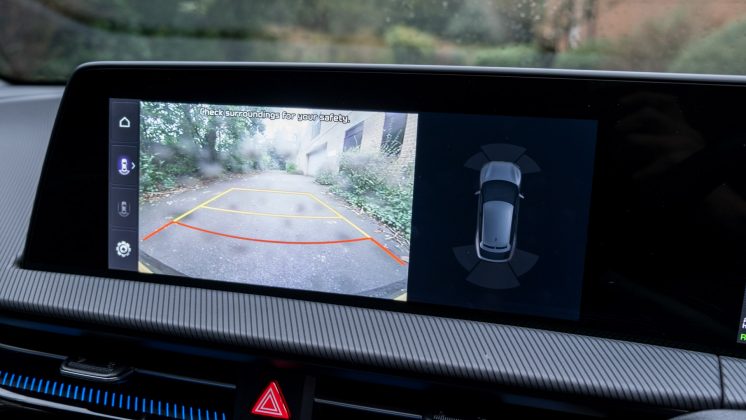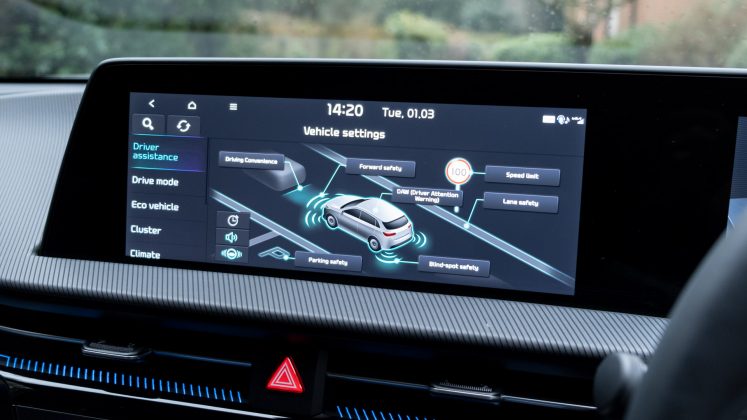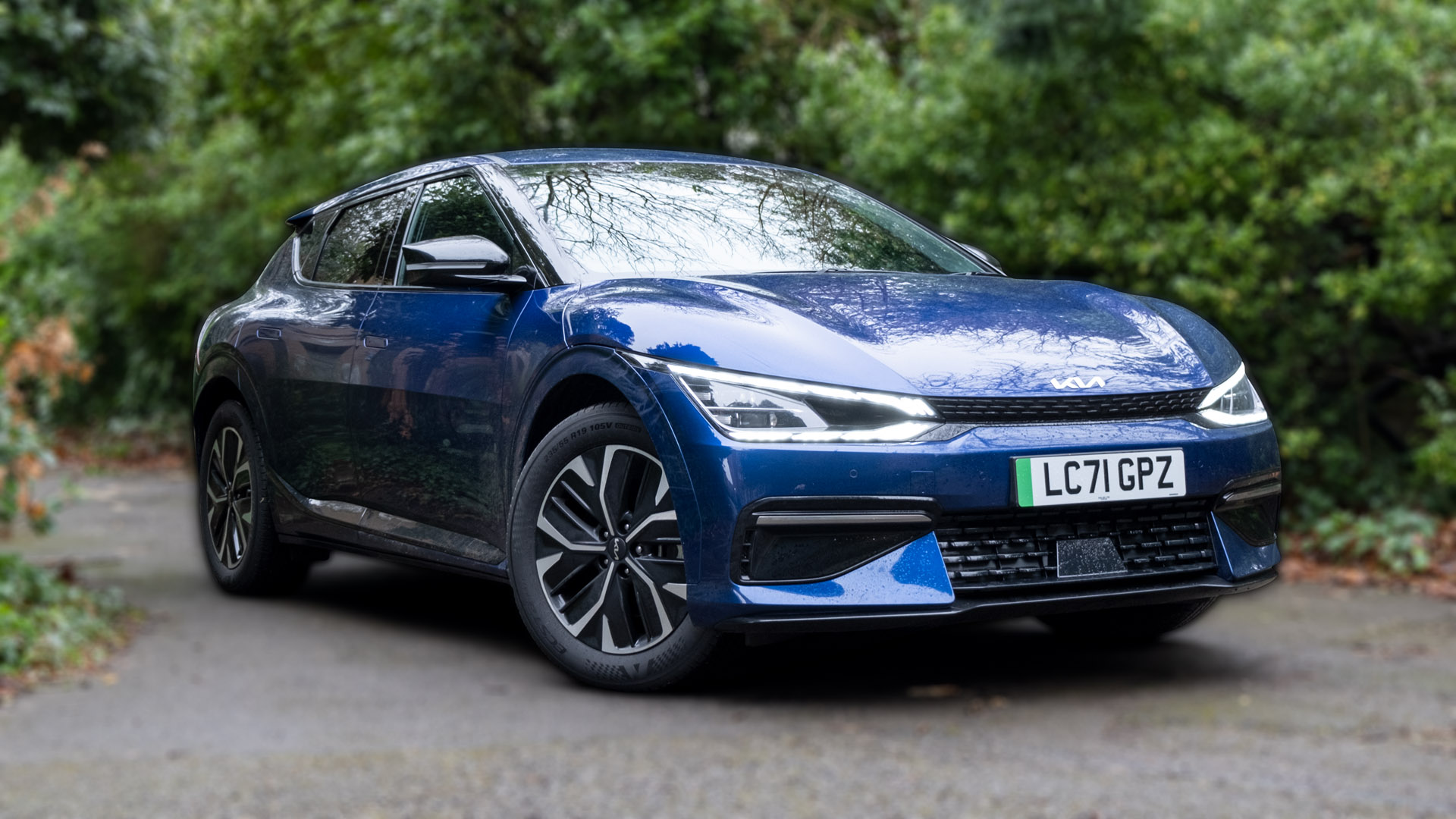The Kia EV6 is an all-electric vehicle that shares many similarities with the Hyundai Ioniq 5. Indeed, both are built on Hyundai’s Electric Global Modular Platform (E-GMP) where the South Korean automaker intends to produce more EVs on its first electric-only platform. In fact, at the time of writing, the Genesis GV60, Hyundai Group’s luxury division, is the third vehicle to share the same development methods.
The question is: can it better the Kia e-Niro, Kia Soul EV and Hyundai Kona Electric, and further, compete with rival offerings?
If you’d prefer to watch a review of the Kia EV6, head on over to our YouTube channel.
Kia EV6 price & competition
The Kia EV6 is available in four trim levels: Air, GT-Line, GT-Line S and GT. The Air starts from £40,945, where it’s only available in a rear-wheel drive (RWD) configuration; the GT-Line starts from £43,945 for the RWD model and costs £47,445 should you want the AWD variant instead; while the GT-Line S costs £48,445 and £51,945, respectively. At the time of writing, the top-spec GT variant has yet to have its UK price announced, although we suspect it’ll fetch over £60K.
A full breakdown of the differences can be found below (click to expand):
No matter which trim level you choose, all the variants house the same 77.4 kWh Li-ion polymer battery pack, whereby in its best configuration, Kia claims one can attain 328 miles of driving range on the WLTP cycle. Better still, they all have the automaker’s seven-year/100,000-mile warranty and 12-year anti-perforation warranty, too.
One key factor that one should consider, however, is that the ‘Air’ trim doesn’t have the ability to be fitted with a ‘Heat Pump’ – a means of utilising heat generated from the battery pack and feeding it into the cabin, which helps optimise driving range and efficiency. Here, the ‘Heat Pump’ is available as an optional £900 extra with the GT-Line and GT-Line S, while this comes as standard in the top-spec GT trim.
Buy a car phone mount on Amazon (Affiliate)
As for competition, there are numerous all-electric SUVs and saloons available – in the former category, you have: the Ford Mustang Mach-E from £42,530; the Mercedes EQA 250 from £44,495; the Audi Q4 40 e-tron at £46,065; the Volvo XC40 Recharge Twin at £54,300; the BMW iX3 from £60,970; the larger Audi e-tron at £62,560; the Jaguar I-Pace at £65,620; the Mercedes EQC at £65,720; and the Tesla Model X at £102,980.
Elsewhere, there are other SUVs one might want to consider: the MG ZS EV starts from £27,495; the Kia Soul EV, e-Niro ‘2 64’ and the Hyundai Kona Electric Premium 64 kWh, the Skoda Enyaq iV 60 and Volkswagen ID.4 all come in at around £34,995. You’ve also got the MG5 EV, an all-electric estate that starts from £27,945.
As for saloons and hatchbacks, there are a plethora of options, too: the BMW i4 from £51,905; the Tesla Model 3 from £43,990; the Polestar 2 from £40,900; the VW ID.3 from £35,835; the Hyundai Ioniq Electric from £30,550; the Nissan Leaf from £26,995; and the Fiat 500 Electric from £23,835.
Read next: Hyundai Ioniq 5 review: Better than Tesla Model 3?
Kia EV6 exterior review
From the exterior, the Kia EV6 certainly has an eye-catching design, at least in our opinion. Its accentuated headlights feed into the flared bonnet to provide an aggressive look, while its rear profile is futuristic thanks to the automaker’s clever taillight design, which stretches the entire width of the vehicle.
As for its side profile, the ‘Air’ trim doesn’t feature body-coloured wheel arches or sideskirts, which detract from the overall aesthetics. Thankfully, the GT-Line trim or above does include them and makes for a more uniform design; 19″ alloys feature in the aforementioned trim levels, while the GT-Line S inherits 20s and the top-spec GT boasts 21s.
Speaking of its side profile, it is a shame that Kia has concealed the EV6’s door handles within each of the four doors. This is very much like the Tesla Model 3, which requires a certain technique to open. While this will become a non-issue for owners, it certainly isn’t as intuitive as the Hyundai Ioniq 5, which props out the handles from the vehicle’s frame when it’s unlocked.
As for your colour options, ‘Runway Red’ is surprisingly the standard option, while ‘White Pearl’, ‘Midnight Black’ and ‘Interstellar Grey’ come in at a £675 option. The pictured ‘Yacht Blue’ only becomes available in the GT-Line or above, but costs the same as the other paint options.
Read next: Volvo XC40 Recharge Twin review: A powerful luxury electric SUV
Kia EV6 interior review
Within the cabin, the Kia has both a familiar and practical design – it doesn’t have the same minimalist design as the Tesla Model 3, nor the use of two flat screens that are present in the Hyundai Ioniq 5. Here, the EV6 uses two 12.3″ curved displays, which are angled towards the driver. This makes for bettered user interaction while on the move.
The infotainment system is very responsive, vivid and appropriately laid out. It also supports Android Auto and Apple CarPlay, although at the time of writing these third-party operating systems are only available through a wired connection; some of its competitors provide wireless integration. Furthermore, the systems don’t seem to be well-optimised, whereby when using Android Auto, a third of the screen is rendered useless – the same could be said with the rest of Hyundai Group’s EV fleet.
It’s similarly disappointing that navigation data from these operating systems isn’t fed to the instrument cluster or Head-Up Display; the latter is present in GT-Line S or above. By comparison, the BMW i4 fully integrates all this data and makes for a more connected driving experience.
Annoyances aside, interacting with the instrument cluster is straightforward thanks to the inclusion of physical buttons on the steering wheel. Two stalks and flappy paddles reside behind the flat-bottom wheel, with the latter used to flick between the regenerative braking levels. The gear selector resides on the centre console in form of a rotary wheel – it’s similar to that of the Kia e-Niro and Soul EV.
Ahead of the centre console, you’ll find two physical knobs and an LCD display, which is used for both media and climate controls. We’re normally not a fan of touch-based input, but Kia’s integration of said settings is arguably the best we’ve come across to date. The slender horizontal panel is extremely responsive and better still, by a touch of a button you can flick between media controls and climate settings, with the two physical knobs also reacting to the layout change – temperature settings for both passenger and driver in the latter, and volume and tuning controls in the former. Truly excellent.
Below this panel, you’ll find a USB Type-A port to connect up to the infotainment system, two USB Type-C ports for charging and a 12V socket, which can be quite handy to provide power to a dash cam. For your rear occupants, there’s a single USB Type-C port found within the inner side of the front seats.
When it comes to audio, Kia integrates six speakers within the Air and GT-Line, but goes a step further in the GT-Line S and GT trims, whereby a 14-speaker Meridian Audio system is used instead. If you’d like to hear how the stock system sounds, watch our detailed review on YouTube.
Kia EV6 storage review
As for storage, the Kia EV6 has lots of it within the cabin. At the rear, the door bins can fit a singular 500ml bottle or small valuables, and the area behind the front seats allow for papers or books to be stowed away. The pulldown armrest also has two cupholders, where thanks to a retractable design can also be transformed into a singular storage compartment.
At the front, the door bins provide sufficient space for a 500ml bottle to sit alongside a small-to-medium-sized purse or wallet, the glove box is large and the centre armrest compartment is too. The centre console also has a wireless smartphone charging pad (this turns into a non-slip pad in the Air trim, which omits charging capabilities), two cupholders and a small customisable compartment for your key fob. Under the centre console, there’s a large open area to store other items. Our only complaint is that the centre console is rather large and has an overhanging design that reminds us of Pride Rock from Lion King; it cannot be moved like the one found on the Hyundai Ioniq 5, whereby a sense of spaciousness is missing in the Kia.
T’is the boot which really impresses, as there’s 490 litres of available space, and with the seats folded flat, this figure extends up to 1,300 litres. Here’s how it stacks up to its all-electric rivals: the Audi e-tron (660/1,725 litres); Skoda Enyaq iV (585/1,710 litres); Hyundai Ioniq 5 (520/1,587 litres); VW ID.4 (543/1,575 litres); Jaguar I-Pace (656/1,453 litres); BMW iX3 (520/1,560 litres); Audi Q4 e-tron (520/1,490 litres); MG5 EV estate (464/1,456 litres); Kia e-Niro (451/1,405 litres); Peugeot e-2008 (434/1,467 litres); MG ZS EV (448/1,375 litres); Volvo XC40 Recharge Twin Pro (452/1,328 litres); BMW i4 (470/1,290 litres); Ford Mustang Mach-E (402/1,420 litres); Kia Soul EV (315/1,339 litres); Mercedes EQA (340/1,320 litres); Citroen e-C4 (380/1,250 litres); Nissan Leaf (435/1,161 litres); Hyundai Ioniq Electric (357/1,417 litres); Tesla Model 3 (425/1,235 litres); VW ID.3 (385/1,267 litres); Renault Zoe (338/1,225 litres); Polestar 2 (405/1,095 litres); Mazda MX-30 (341/1,146 litres); Hyundai Kona Electric (332/1,114 litres); Fiat 500 Electric (185/550 litres).
In the EV6, there’s also a frunk (front storage) compartment wherein the RWD models you have an additional 52 litres of space, whereas in the AWD models there’s 20 litres of space due to the additional front-mounted motor. The issue, however, is that the area under the bonnet is not electronically operated and requires to be released through a lever found within the cabin.
Similarly, in the Air and GT-Line trims the rear boot is manually operated, with no option to add a smart electric tailgate, as you’d find in the GT-Line S or GT trims. Thankfully, however, the boot lid is easy to open and close thanks to the use of light hydraulics.
Elsewhere, there’s a retractable and removable boot lid, which can conveniently be stored away within the underfloor compartment. Here, you’ll also find a small area to tuck away your charging cables although, in the GT-Line S or GT trims, you have 10 litres of reduced capacity due to the positioning of the Meridian subwoofer. No matter which trim you choose, the EV6 has 60:40 split-folding rear seats, where it’s a shame not to see a 20:40:20 design instead, but thankfully the rear middle seat has a ski latch, which permits you to take elongated goods.
Read next: Skoda Enyaq iV review: The Volkswagen ID.4 alternative
Kia EV6 comfort review
Should you not need to take a set of skis, you’ll be pleased to know that Kia has optimised the rear cabin floor, whereby there’s no transmission tunnel. This means that the middle occupant can put their feet down with ease and sit comfortably.
As for legroom and headroom, 6-foot (182cm) individuals will feel comfortable at the rear, whereas at the front, taller individuals can be seated with ease. To find the best driver’s position, Kia provides manually adjustable seats in the Air and GT trims or electronically-adjustable front seats in the GT-Line or GT-Line S, the latter can also fully recline to provide that extra bit of relaxation to the driver or front passenger.
The rear seats also have a reclining functionality, allowing occupants to find the best level of comfort on longer trips; the outer second row are heated in the GT-Line S and GT trims, and there are ventilated front seats and a sunroof with tilt and sliding functionalities in the former variant, too. Heated front seats and steering wheel come as standard on all trim levels.
There are two areas of concern when it comes to comfort, however. The first is somewhat trivial, as it relates to accessing the rear of the cabin. Due to the design of the sideskirts, you might hit your shins on the body panel if you’re reaching over to get shopping bags or to move a child seat.
The second issue depends on how the rear seat belts have been left; if the clip is positioned at the top of the seat or has moved towards the outer segment, it’ll cause an unwanted rattle when traversing rougher terrain. This can detract from the otherwise quiet interior cabin environment and is rather disappointing to see that the Korean automaker overlooked this issue when designing the vehicle.
Read next: Tesla Model 3 review (2021 facelift): Should you buy into the hype?
Kia EV6 performance review
Continuing on the aspects of comfort, we found the suspension setup to be a little stiff but still perfectly comfortable when faced with speed bumps and potholes; it’s just not as comfortable in and around town in comparison to the Nissan Leaf, Kia e-Niro or Soul EV.
For a relatively large-sized vehicle, you might expect body roll, but surprisingly like the Hyundai Ioniq 5, BMW iX3 and Jaguar I-Pace it’s kept under control. Granted, it won’t stay as planted to the ground nor offer the same driver’s feel of the BMW i4, Polestar 2, Tesla Model 3 or VW ID.3 but, the EV6 does provide for a superior driving experience over the Hyundai Kona Electric, Kia e-Niro and Soul EV.
Compared to Kia’s previous-generation models you’d expect any E-GMP designed vehicle to be far quicker, but that’s not quite the case in the RWD models. Indeed, the less powerful variants have a rear-mounted motor that outputs 168 kW (226 hp) of power and 350 Nm of torque, while top speed is rated at 114mph. Using Racelogic’s Vbox Sport, we had this tested from 0-60mph in 7.1 seconds. By comparison, Hyundai Group’s older EVs managed to output 150 kW (201 hp) of power and 395 Nm of torque from the front-mounted motor, and attained a similar 0-60mph time of seven seconds.
Of course, if you move up to the AWD GT-Line and GT-Line S with the EV6, you can attain 239 kW (321 hp) of power and 605 Nm of torque, which is set to get you to 60mph from a standstill in sub-five seconds (we had the AWD Hyundai Ioniq 5 tested at 4.87s), while the top-spec GT trim can generate 430 kW (577 hp) of power and 740 Nm of torque and should attain 60mph in sub-3.5 seconds; pitting it against the likes of the Tesla Model 3 Performance and BMW i4 M50.
Buy a car phone mount on Amazon (Affiliate)
Aside from straight-line performance, a key factor for any electric vehicle is its electric range. Here, Kia claims the EV6 with its 77.4 kWh battery pack can run up to 328 miles on the WLTP cycle. That is, however, if you have a heat pump installed, which is a £900 option in the GT-Line and GT-Line S, comes as standard in the top-spec GT trim and isn’t available in the Air trim level. In the tested GT-Line with heat pump, we attained 240-260 miles in our mixed driving tests. This is a smidge better than the AWD Hyundai Ioniq 5, where we attained 230-250 miles from its 72.6 kWh battery pack using the same testing methodology.
By comparison, the small VW ID.3 achieves 230 miles, the Volvo XC40 Recharge Twin Pro and Polestar 2 (with heat pump) achieve 230-250 miles; the BMW i4, the Audi Q4 e-tron, the Kia e-Niro, the Kia Soul EV, the Hyundai Kona Electric, and the Volkswagen ID.4 all achieve 260 miles; the Skoda Enyaq iV nets closer to the 300-mile mark, while the Tesla Model 3 RWD achieves between 230-250 miles, with the Long Range model still reigning supreme at a tested 310 miles.
Ultimately, the EV6 – much like the Hyundai Ioniq 5 – is a good performer but isn’t as impressive as we would have hoped for a vehicle that’s been designed on a fully electric platform. Of course, one might attain greater range if you drive conservatively, or significantly less if you choose to consistently drive in Sport mode and solely drive on the motorway.
What does impress, however, is the degree of customisation with regenerative braking. Here, there are a number of different modes to choose from by either using the flappy paddles behind the steering wheel to select between Level 0, 1, 2, 3 or if you rather let the vehicle decide you can opt for ‘Auto mode’, where the level of harshness (low, medium or strong) can be customised and stored through the infotainment system.
Best of all is i-Pedal mode, which allows for one-pedal driving. See, unlike the Kia e-Niro, the Kia Soul EV and the Hyundai Kona Electric you can bring the EV6 to a complete standstill by simply lifting off the accelerator pedal; this makes inner-city driving a breeze as one doesn’t have to resort to using the brake pedal. Note, you can also bring the EV6 to a complete standstill while in Auto mode, but you’ll need to hold the left flappy paddle for a few seconds.
Our only complaint, however, is that each time you power on the vehicle, you’ll need to re-enable i-Pedal mode by using the left flappy paddle. The Polestar 2 and Tesla Model 3, for example, preserve the one-pedal driving mode through the infotainment system, making for a less cumbersome experience; hopefully, Kia can address this issue via a firmware update.
Aside from recouping energy while on the move, you can also plug in the vehicle. Thanks to its 800-volt architecture, the Korean automaker supports up to 220-225 kW of input via the CCS charging port. This allows you to go from 10-80% charge in roughly 18 minutes. Opt for a more commonly found 50 kW input and it’ll take 1 hour 13 minutes, instead.
For home or workplace chargers, the EV6 has an 11 kW onboard charger and a Type 2 port, which means it’ll take 7 hours 20 minutes from empty to full, while a 7 kW charge point will take roughly 16 hours. A 3-pin input will take in excess of 33 hours.
Now similarly to the Hyundai Ioniq 5, the EV6 has Vehicle-to-Load (V2L) technology in the GT-Line or above. This allows you to slowly charge (3.5 kW/220 Volts) another electric vehicle using the included adapter for its Type 2 port, or use the in-cabin 3-pin socket found below the rear middle seat to power any household appliances, such as a laptop or even a full-blown De’Longhi coffee machine; useful for those who like camping – you can see it in action on our YouTube channel, Instagram feed or TikTok page.
Kia EV6 safety review
When it comes to safety, the Kia EV6 has yet to be tested by Euro NCAP, but suspect it’ll achieve a similar 5/5 score as the Hyundai Ioniq 5. As for the driver assistance systems, the EV6 offers a slew of standardised features: Forward collision avoidance assist (FCA), City/Pedestrian/Cyclist/Junction Turning; Hill-start assist control (HAC); Highway driving assist (HDA); Intelligent speed limit assist (ISLA); Lane follow assist (LFA); Lane keep assist (LKA) with driver attention warning (DAW); Multi-collision brake assist (MCBA).
It’s great to see a large number of standard features available in the Air trim, whereby LFA, LKA and HDA combine to work faultlessly. The systems keep you centred on the motorway. Elsewhere, navigation-based smart cruise control with stop-and-go functionality, make it even better to drive on tedious routes.
The GT-Line adds blind-spot collision avoidance assist (BCA) with rear-cross traffic assist (RCTA) & safe exit assist (SEA), while the GT-Line S and top-spec GT add parking collision-avoidance assist (PCA), highway driving assist 2 (HDA2), forward collision avoidance (FCA) with junction crossing, and the excellent blind-spot view monitor that displays your surroundings on your instrument cluster when you’re indicating; this is thanks to the inclusion of cameras on the wing mirrors.
On the subject of visibility, the EV6 has large windows at the front and sides, which make it easy to see most of your surroundings. The rearview window, however, is a little limited and with the omission of a wiper, it does often mean that you’ll have to rely on the rearview camera and sensors. Thankfully these do come as standard.
Should you want to better the experience, you’ll have to opt for the GT-Line or above for front parking sensors. The GT-Line S and top-spec GT also bring 360-degree cameras and remote smart park assist (RSPA).
Read next: Polestar 2 review: The all-electric muscle car
TotallyEV’s verdict on the Kia EV6
On the whole, the Kia EV6 is on-par with its sibling, the Hyundai Ioniq 5. Its stylish exterior design, combined with the practical and familiar-looking interior and good electric range will win over many customers.
However, there are plenty of alternatives you might want to consider. All of the Hyundai Group’s older-generation vehicles are still excellent choices and come in at a cheaper price tag. Indeed, the Hyundai Kona Electric, Kia e-Niro and Kia Soul EV offer a compelling package should storage space and raw performance not be your utmost priority. Should these factors be a necessity, then the Volvo XC40 Recharge Twin, Skoda Enyaq iV and to a degree the Audi Q4 e-tron, all offer a tempting proposition.
Then, you have the VW ID.3, which is a fun-sized EV, the Polestar 2 with its muscle-car design characteristics, the BMW i4 with its faultless driving dynamics, and the Tesla Model 3, which provides class-leading driving range and a comprehensive charging infrastructure.
Suffice to say, there are other options, but we’d love to know if you’d pick the Kia EV6 over its rivals? Let us know in the comments section below or via social media; we’re on: YouTube, Instagram, Facebook, Twitter and LinkedIn.


